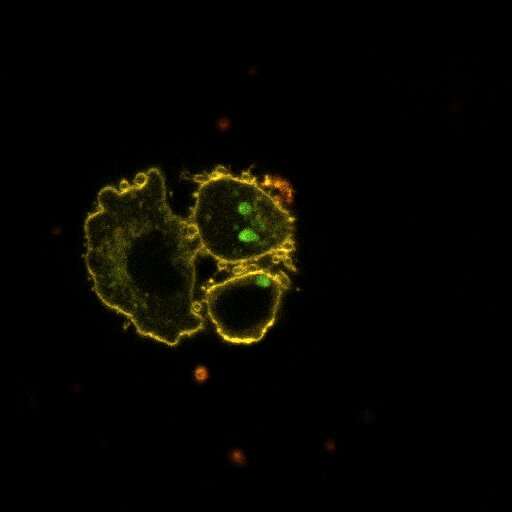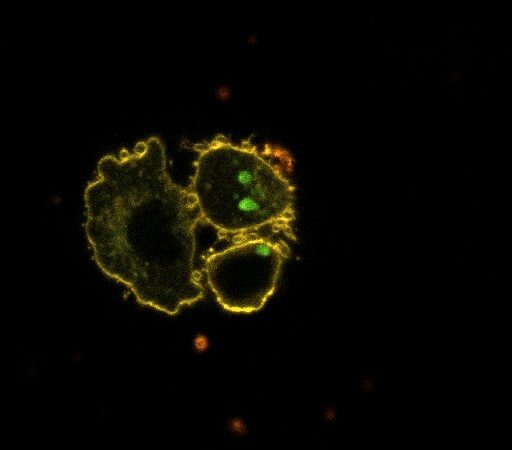
Like all living beings, human physiological processes are influenced by circadian rhythms. The disruption of our internal clocks due to an increasingly unbalanced lifestyle is directly linked to the explosion in cases of type 2 diabetes. Now, a team from the University of Geneva (UNIGE) and the University Hospitals of Geneva (HUG), in Switzerland, has found that his disturbance disrupts the metabolism of lipids in the cells that secrete glucose-regulating hormones. Sphingolipids and phospholipids, lipids located on the cell membrane, seem to be particularly affected. This change in lipid profiles then leads to a rigidity of the membrane of these cells. These results, appearing in the journal PLOS Biology, provide further evidence of the importance of circadian rhythms in metabolic disorders.
Lipids have a variety of cellular functions. As one of the main components of cell membranes, they are involved in the signaling pathways through which cells communicate with each other and with their environment. “We have known for some time that the disruption of circadian clocks was closely linked to metabolic diseases, such as type 2 diabetes, where the body is no longer able to regulate blood sugar levels effectively,” explains Charna Dibner, a professor in the Departments of Surgery and of Cellular Physiology and Metabolism, as well as in the Diabetes Center of the UNIGE Faculty of Medicine and the HUG, who led this research. “It is also established that lipids play a significant role in metabolic disorders. But the impact of circadian rhythms on lipid functions remained unknown.”
A complex in vitro model of human molecular clocks
Islets of Langerhans are clusters of different types of endocrine cells located in the pancreas, notably responsible for the secretion of insulin and glucagon, the hormones that regulate blood glucose. To understand how lipids are influenced by circadian rhythms, the scientists analyzed the oscillation profiles of more than 1,000 lipids in human islets from people with type 2 diabetes and from healthy individuals.
“The experimental design we used is particularly complex,” explains Volodymyr Petrenko, a researcher in Charna Dibner’s laboratory and first author of this study. “When we study a muscle, for example, we can take a biopsy every hour. But when it comes to internal organs such as the heart, liver or pancreas, as in this case, this is of course impossible. We therefore had to develop a model of disrupted molecular clocks in vitro with human pancreatic islets.”
In a living organism, a central clock in the brain orchestrates the peripheral clocks in the cells of all organs according to external stimuli. In the lab, scientists have therefore artificially replaced this central clock to resynchronize the cells. “In fact, in vitro, each cell retains its own rhythmicity but without overall coordination. However, our work is aimed precisely at understanding how rhythms, formed in a multicellular population that are necessary for the functioning of the endocrine pancreas as an entity, control intracellular lipids metabolism,” adds Volodymyr Petrenko.
A stiffening of the membrane
Comparing islets from people with type 2 diabetes and from healthy people showed that lipid profiles oscillate during the day much more than previously thought. “And not only are the islet lipid profiles in diabetics and non-diabetics different, but the way they oscillate over the course of the day also differs.”
In addition, the scientists observed a particularly large change in the temporal profile of phospholipids and sphingolipids, two classes of lipids that are the main components of the cell membrane. “Recent studies have shown a link between these phospho- and sphingolipids and the loss of insulin production capacity typical of type 2 diabetes,” explains Charna Dibner. “Our study goes in the same direction: we observed that islets with disrupted clocks had an accumulation of phospho- and sphingolipids that stiffened the membrane. This may affect the cell’s ability to detect environmental signals and therefore to secrete insulin when needed.” Moreover, the scientists were able to reproduce phenomenon with healthy pancreatic cells by artificially disturbing their circadian clocks. Studies will continue to understand the exact cause and mechanism of this phenomenon.
Promoting lifestyle changes?
This work establishes for the first time a direct link between the disruption of circadian clocks and the lipid changes typical of diabetics. These basic research data lay the foundation for research with patients.
Source: Read Full Article
